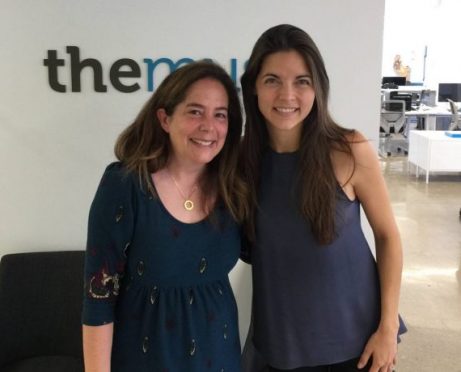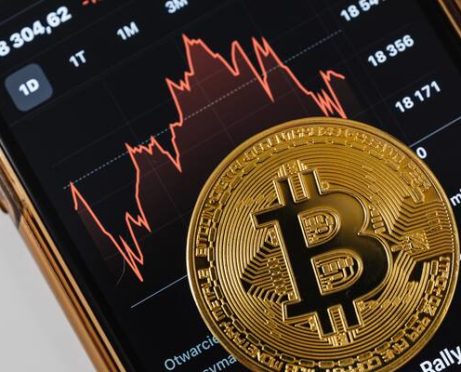
As the mom of two teenage daughters, I am a colossal fan of anything that allows them to become confident investors. Saving and investing are financial literacy issues — especially since we will all need to become more self-reliant when it comes to our financial futures.
What’s more: The stock market 10-year return over the past 140 years averaged 9.2 percent, according to Goldman Sachs. That’s why I don’t want my daughters to park their money in a savings account where they earn less than 1 percent in the current environment and are losing money with inflation.
Sure, everyone should have a little cash accessible for emergencies, but investing is a crucial wealth-building strategy.
I’d much rather my daughters learn some investing lessons (and sure, hopefully, have some wins) now instead of blindly trusting a fill-in-the-blank: financial advisor, friend, significant other. I believe it’s always better to learn money basics on your own with the help of others. If we understand the basics, it will be more difficult for someone to pull a fast one on us.
In full disclosure, I’ve been a Greenlight customer for more than a year, after reviewing money apps for kids under 18 last year for CentSai. At the time, it was a close race between FamZoo and Greenlight.
Ultimately I chose Greenlight, but FamZoo remains an excellent runner-up. FamZoo is family run, is dedicated to financial literacy, and has phenomenal customer service and a Facebook group to help existing customers.

What Is Greenlight’s New Offering? Greenlight Max
Last week I noticed — with a fresh redesign of the app — a new button appeared alongside spending, savings, and allowance: investing.
I was intrigued. Was it “real” investing or a simulation? Could my daughters short the soybean market without me knowing? What is the real cost of the service?
Since I already have a Greenlight account, I did not need to download the app from the App Store or Google Play. If you need help setting it up — though it’s very intuitive — you can follow the screenshots of my earlier review.
In a nutshell, the basic Greenlight is $4.99 a month and includes debit cards for up to five kids that can be used at stores and at ATMs across the United States.
Parents can synch their financial account to Greenlight, and decide how and when to add and disperse money — whether it’s through a list of chores your child needs to complete weekly, a one-off project, or if you just want to give your kids money for a myriad of reasons that come up.
It’s been simple for me to use, and I am not a tech genius. Greenlight includes an autofill feature that I don’t use, as I always want to go through the manual effort of putting money in the family’s account; otherwise, it’s easy to set it and forget it.
I like the fact that the app confirms any action before completing a request.
Moreover, the minute my girls spend money, I get an immediate notification, as you can see in my first screenshot (my older daughter paid for an Uber with her Greenlight as I was writing this). I personally don’t restrict where they can spend money, but there are parental controls that can restrict spending.
My girls were a bit intimidated to have their own debit card at first. Now, they are accustomed to using it.
Sign Up for 30-day Free Trial Now!

Real-time Investing for Kids!
Greenlight started offering investment in the stock market in two new plans: Greenlight + Invest for $7.98 per family (up to five kids) per month or Greenlight Max for $9.98 per family per month, which comes with various additional protections such as cell phone, identity, and purchase protection and a black debit card.
Let’s start with investing.
If you click on investing, your child is asked to take a very simple risk assessment questionnaire. Then they are brought to a screen where they can see their cash on hand, or move cash into their investment account with your permission.
Greenlight provides the ability to invest in individuals stocks and in exchange-traded funds (ETFs).
This money app includes Morningstar research for you and your kids to gain a basic understanding of the practical aspects of the market.

What is a ticker symbol? What is this stock or ETF currently trading at? What is the five-year chart? One-year? What are the analysts saying? Do we agree?
So, my daughter bought a fractional share of Apple stock. I was notified as the parent or guardian, and all trades are approved by you if your child is not age 18.
The cost-per-trade was paid through her monthly fee. The app is transparent about any additional fees, which seem to be related primarily to fund management.
As an example, the Vanguard S&P 500 ETF has a five-star Morningstar rating. We discussed how ETFs offer broad exposure to a sector, but since some are actively managed, there is typically a fee or expense ratio — in this case 0.03 percent, as shown to the right.
My older daughter also decided to put $15 in Shopify. She bought a Gold ETF as a hedge against inflation, which we had the opportunity to discuss.
Though I told her to invest for the long term, she checks her portfolio every day. Part of it I am sure is the novelty.

It gave us a chance to speak about how not to overreact when the market is volatile; in fact, it can be the worst time to sell, but can also be a great opportunity to buy.
We spoke about how a loss on paper is not an actual loss until you sell your shares.
The money app provides kids with the hands-on experience of actually investing, removing the mystique from it as if it is a foreign act reserved for men in their 60s, running across the beach with their Labrador.
The education portal is robust. There were certain stocks I was unable to find, but there’s enough to make a smart selection, and to get comfortable with looking at a portfolio of money, no matter how small.

Real-world Investing Experience
In my opinion, this money app couldn’t have come at a better time for my kids. My younger daughter, who is glued to TikTok, wanted to purchase GameStop as her first buy. She heard about the hullabaloo on Reddit, and she thought she was getting in on the action, as did many more seasoned investors.
So we used Greenlight to pull up the GameStop chart, and though anything I say to her is slightly annoying these days, we had a discussion about what happened with that stock, and why it was very risky to place her money there.
We started by looking at the 52-week range, which is $2.57 to $483. True, the stock is up more than 1000 percent since August 2020, but it had been trending low for months.
Investing in GameStop, not looking at any fundamentals but on an emotional need to get in on the action and stick it to “the man,” are not smart reasons to pick a stock. I ultimately left it up to her, and she decided on Apple, Netflix, and PayPal.

Long story short, Greenlight Invest is a hands-on opportunity for almost any child or teen to start learning about the stock market, which has historically had higher returns than other asset classes.
Why not start small and let them get their feet wet while they have time on their side?










![[VIDEO] What Is Blockchain?](https://centsai.com/wp-content/uploads/2022/11/blockchain-RESIZED-461x372.jpg)